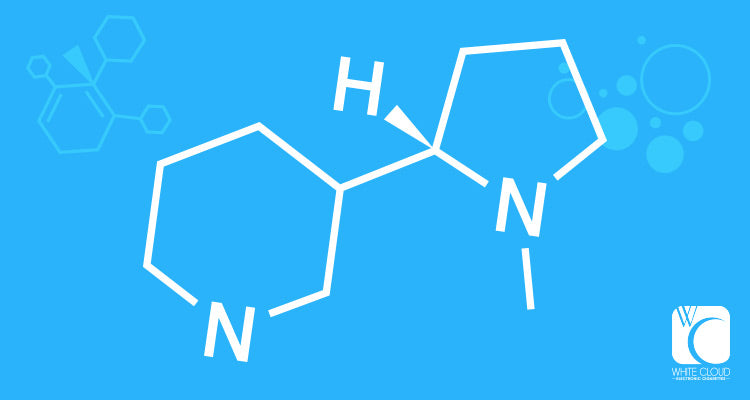We’ve seen this statement time and time again: “We don’t know what’s in electronic cigarettes.” The truth is, most electronic cigarette companies make this information readily available, yet the claim continues. For example: in 2014, CHIDONT, a Chicago-based anti-tobacco campaign, released an ad implying electronic cigarette companies don’t make ingredient info available.
The ad, funded by the Centers for Disease Control and Prevention, can’t be reprinted here without permission. But it says the following:
CHI: DON’T VAPE IN MY VIEW
Do you know what’s in e-cigarettes? Then don’t tell me they’re safe.
A Breakdown of E-Liquid Ingredients

Thanks to irresponsible media coverage of e-cigarettes, which largely centers on what the general public doesn’t know about vaping, news articles and ads like these are becoming more prevalent. However, what the media fails to acknowledge are companies like White Cloud, which are transparent about e-cig ingredients.
Heck, we even have a sister site, DeMISTified, which is devoted to e-cigarette science, and includes a detailed breakdown of e-liquid ingredients. Between our “E-Cig 101: How E-Cigs Work” learning pages and plethora of blog posts about what goes in our e-liquids, if you have a question about what’s in e-liquid or if there are any potential side effects of vapor cigarettes, we have an answer.
But, since the CHIDONT ad team failed to research beyond the first three Google search results, we have a counterpoint. Here are the exact ingredients of White Cloud e-liquid (as seen here):
- 84.6% – 92% Propylene Glycol and Glycerol
- 0% – 5.4% Nicotine
- 8% – 10% Flavorings
That’s it. No formaldehyde. No mace. No federally banned mosquito repellents or carbon dating materials: Just those four ingredients. Let’s dive in a little further…
Related: What's Really in a Tobacco Cigarette?
Propylene Glycol and Glycerol In Vapor Products

If you’re put off by the term “propylene glycol,” I encourage you to stop, go grab some of your favorite foods and drinks, and read the ingredients because it’s probably in there. And in cough syrup, too. It’s also extremely common in asthma inhalers. Similarly, glycerol is a colorless, odorless, viscous liquid that is widely used in pharmaceutical formulations.
At White Cloud, we use excipients such as glycerol and propylene glycol to replace the role of tobacco smoke in delivering nicotine during inhalation. While the long-term impact of inhalation of these chemicals needs further investigation and research, they are given a “Generally Recognized as Safe” designation by the US Food and Drug Administration (FDA). New e-cig users may experience a few side effects of vapor cigarettes; however, these side effects are easy to combat and usually disappear once the user has become accustomed to vaping.
Nicotine Content in E-Liquid

Nicotine has been discussed extensively throughout White Cloud’s main website; but, to summarize, nicotine is not a carcinogen. If nicotine were harmful for consumption, the FDA would not have approved nicotine replacement therapy.
Nicotine is a naturally occurring alkaloid found in the nightshade family of plants. Other plants that contain nicotine include tomatoes, potatoes and eggplant. In other words, if you’ve attended a summer cookout, you may have consumed nicotine.
Is nicotine potentially addictive? Yes. It has addictive properties, but is not necessarily addictive to all who use it. Likewise, it is not harmful for consumption at levels of intended use, such as inhaling through e-cigarettes. It has been approved for long-term use within the Nicotine Replacement Therapy category, by both the FDA and Medicines and Healthcare Products Regulatory Agency (MHRA).
Related: The Truth About Nicotine
The Flavorings in E-Liquid

This is the simple part. White Cloud only uses food-grade flavoring components to create the e-liquid flavors in our e-liquids and disposable e-cigs. These are the same flavor additives used in candy, sodas and other packaged snacks and foods – things people safely consume every day.
And, contrary to the beliefs of the anti-vaping community, adults do enjoy flavors – and many would rather puff on a flavored e-cig than a tobacco cigarette.
When the Media Does More Harm than Good

The CHIDONT campaign ad is probably based on good intentions. If you don’t smoke, don’t start. Similarly, if you never smoked, don’t start vaping. But for those who switched to e-cigs from tobacco, this campaign could be sending the wrong message. By scaring people about “unknown e-cig ingredients”, they may drive people back to tobacco cigarettes out of fear and misrepresentation.
Making blanket claims about an entire industry not only paints many good companies in a bad light, but also gives false information to the public about our products. No campaign should try to achieve a goal through misinformation, no matter how well-intentioned it may be.






